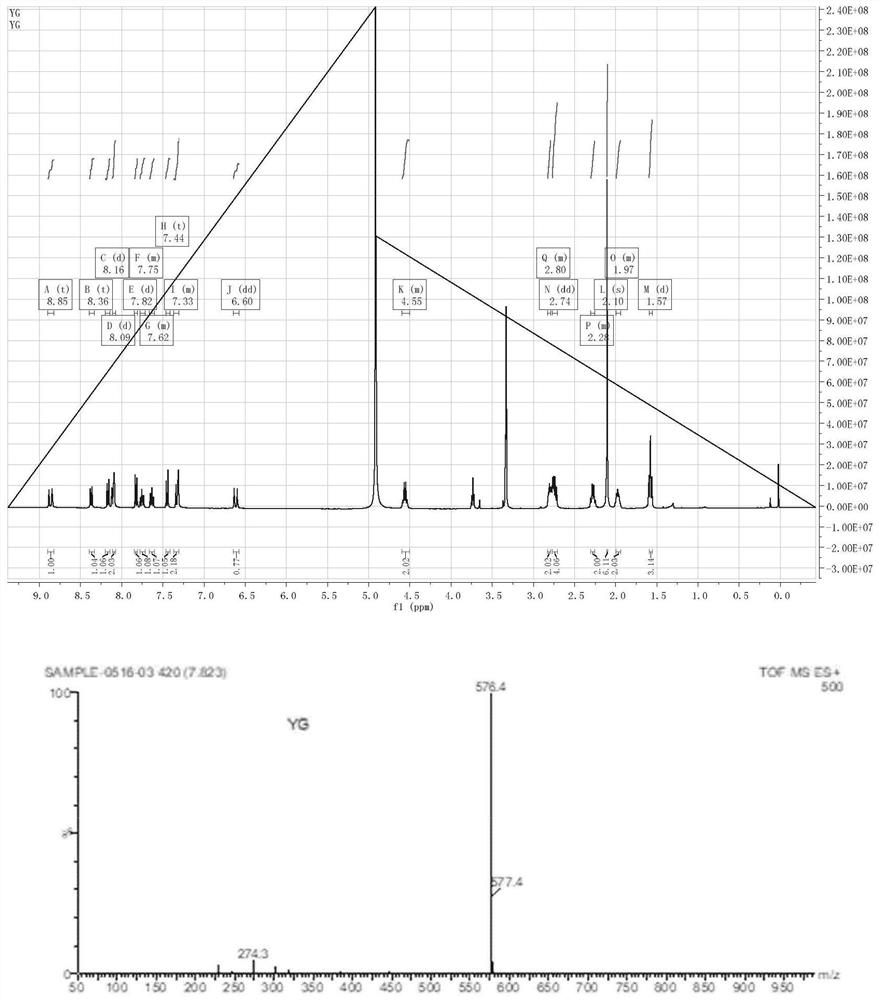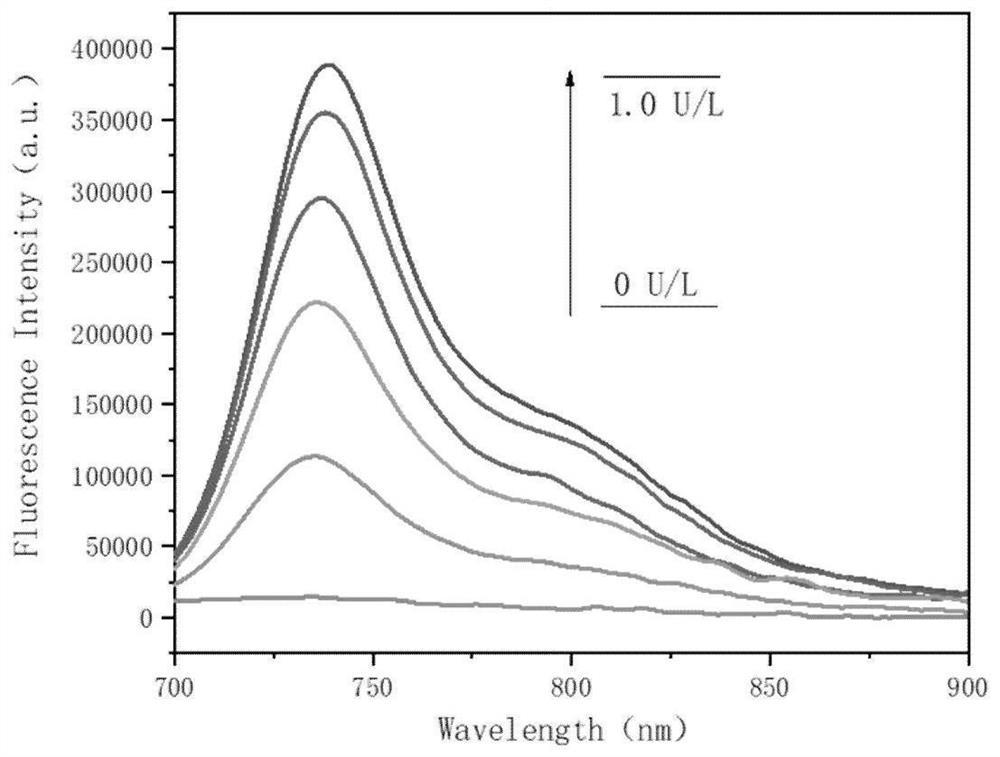Near-infrared fluorescent molecular probe for detecting gamma-glutamyl transpeptidase and preparation method and application of near-infrared fluorescent molecular probe
A fluorescent molecular probe, glutamyl transpeptidase technology, applied in fluorescence/phosphorescence, chemical instruments and methods, material analysis by optical means, etc., can solve the problems of auto-fluorescence interference, difficult fluorescence, etc. Effects of toxicity, high sensitivity, excellent selectivity
- Summary
- Abstract
- Description
- Claims
- Application Information
AI Technical Summary
Benefits of technology
Problems solved by technology
Method used
Image
Examples
Embodiment 1
[0042]Preparation of near-infrared fluorescent molecular probes for detecting γ-glutamyl transpeptidase:
[0043]Add dichloromethane (12mL) into a round bottom flask, slowly add compound 1 (1mmol) under nitrogen protection, start stirring, and slowly add Boc-L-glutamic acid-1 under nitrogen protection under stirring -Tert-butyl ester (8mmol), after stirring for 15 minutes, slowly add N,N-diisopropylethylamine (1.2mmol) under nitrogen protection, stir and react at room temperature for about 30 minutes, and add dropwise to the reaction solution Trifluoroacetic acid (18μL), stir at room temperature for about 24 hours, wait for the solution to turn dark blue, pour the reaction solution in the bottle into a separatory funnel, add distilled water, mix thoroughly, and let stand. After the solution in the separatory funnel separates , Take the upper aqueous phase solution and freeze-dry to obtain a blue solid, which is the target probe.
[0044]The probe mass spectrum and hydrogen nuclear magneti...
Embodiment 2
[0046]The fluorescence emission measurement experiment of the response of near-infrared fluorescent molecular probe and γ-glutamyl transpeptidase in vitro:
[0047]Weigh 5.6 mg of the probe prepared in Example 1 and dissolve it in 1 mL of DMSO to prepare a 10 mM probe stock solution. Take 0.14 mg of γ-glutamyl transpeptidase (30 U / 4.2 mg) and dissolve it in 10 mL of PBS buffer to prepare 100 U / L of γ-glutamyl transpeptidase mother solution. Prepare 6 5mL centrifuge tubes, add 2mL PBS buffer (pH=7.4) to each centrifuge tube in turn, and then add 2μL of the probe mother liquor. At this time, the probe concentration of each centrifuge tube is 10μM. After fully mixing, add 0, 4, 8, 12, 16, 20 μL of γ-glutamyl transpeptidase mother solution into each centrifuge tube, and after 20 minutes of reaction, add them to the cuvette for fluorescence emission. Detection (wavelength of excitation light is 658nm), the data obtained is processed by origin softwarefigure 2 ,Such asfigure 2 As shown, as t...
Embodiment 3
[0050]Selective experiments of near-infrared fluorescent molecular probes:
[0051]Pass and concentration (100μM) of different substrates: GGT (γ-GT), KCl, NaCl, MgCl2, CaCl2, Cysteine, GSH, Glutamate, MnO2, Vc, KMnO4Incubation was performed to test the selectivity of the probe (10 μM) prepared in Example 1 to GGT. Such asimage 3 As shown, only GGT has the ability to induce a significant increase in the fluorescence signal, while other substances cannot induce a significant change in the fluorescence signal. The results clearly show that the probe of the present invention is a highly specific probe, and its response to GGT far exceeds that of other different substances.
PUM
 Login to View More
Login to View More Abstract
Description
Claims
Application Information
 Login to View More
Login to View More - R&D
- Intellectual Property
- Life Sciences
- Materials
- Tech Scout
- Unparalleled Data Quality
- Higher Quality Content
- 60% Fewer Hallucinations
Browse by: Latest US Patents, China's latest patents, Technical Efficacy Thesaurus, Application Domain, Technology Topic, Popular Technical Reports.
© 2025 PatSnap. All rights reserved.Legal|Privacy policy|Modern Slavery Act Transparency Statement|Sitemap|About US| Contact US: help@patsnap.com



